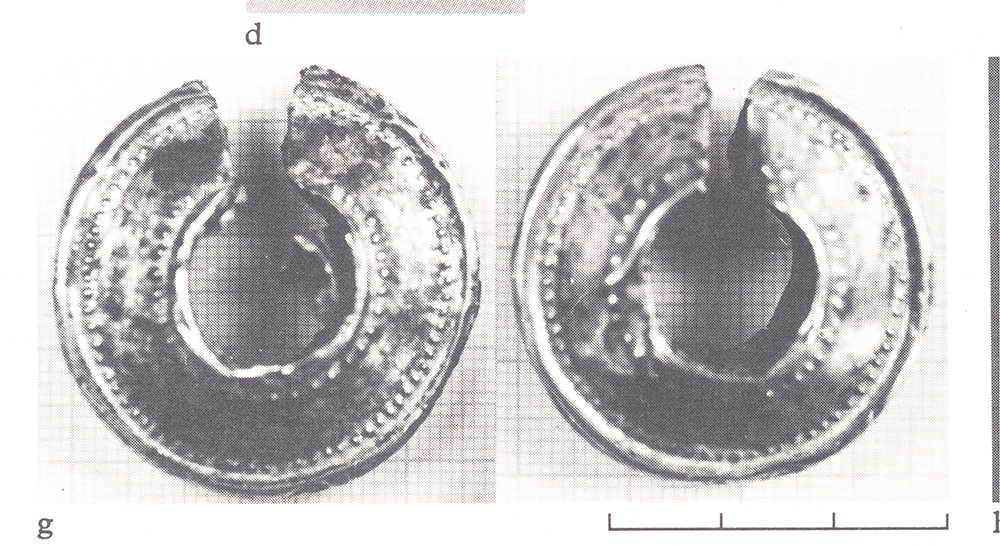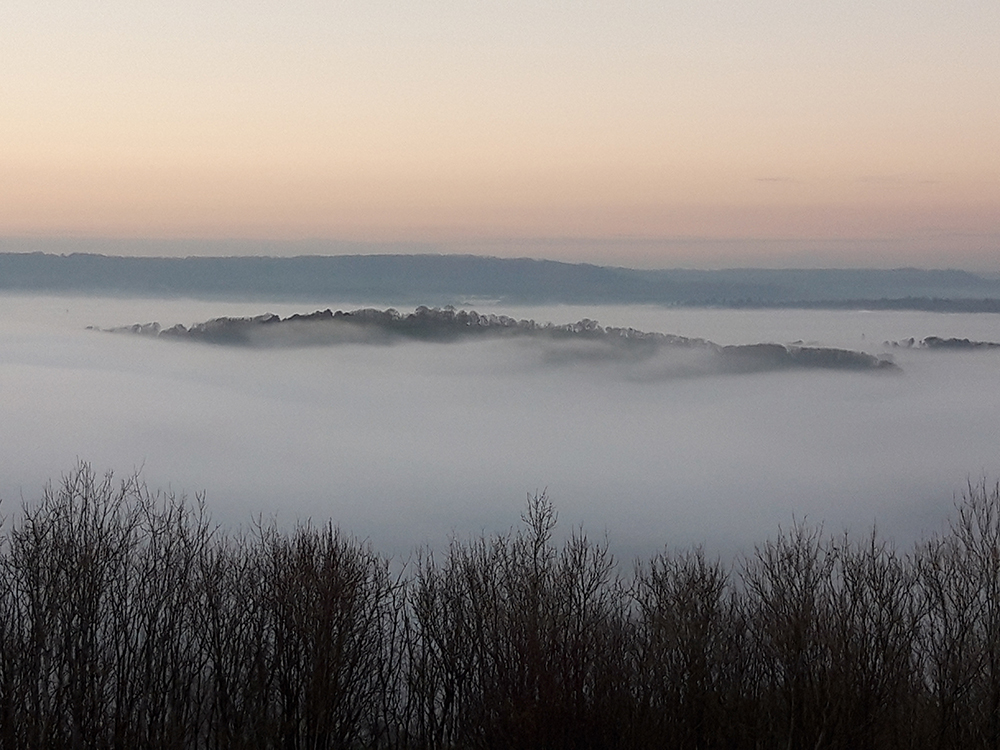Harting is in the unusual position of having not just one, but two hillforts dating to the Iron Age. Although before anyone gets ideas about two warring tribes fighting it out on the Downs, it must be pointed out that they were not contemporary. The first one sits on top of Beacon Hill and dates to the Early Iron Age, whereas the second one is on Torberry Hill and dates to the Middle and Late Iron Age.

Very little of Beacon Hillfort has been excavated and so it is hard to be too precise about exactly when it was constructed, what it was for or when it was abandoned. Two attempts have been made in the past to answer these questions, first by P. A. M. Keef in the late 1940’s and early 1950’s, who excavated various small trenches dotted around its perimeter and then by Owen Bedwin in the 1970’s, who put a trench in the hillforts south-east corner and had another look at the entrance which Keef had early identified. Altogether these trenches looked at only about 2% of the whole fort, so not much to go on.
To help with the dating, the excavations produced a handful of Early Iron Age pottery and two rather spectacular gold penannular rings (sometimes called “lock rings” or “tress rings” because it was thought, somewhat fancifully, that they may have been braided into the hair of fair young Iron Age maidens). The rings came from the base of the ditch just beside the hillfort’s only entrance, which lies on its western side approached by a path rising diagonally up the side of Beacon Hill. Somewhat confusingly for those wanting to date the origin of the hillfort, the lock rings fit into a period from about 1000BC to 800BC, whereas the pottery was thought to be much later, but more recent studies of the latter are beginning to close the gap, and so it is now looking like the hillfort may well have its origins in the very late Bronze Age/ Early Iron Age, so around 800BC.

So what was the hillfort for? There would appear to be two trains of thought – some feel that it is too large (10 hectares altogether), too feebly defended (just one ditch and bank around its circumference) and too thinly occupied, to be the site of a major settlement, and that it was perhaps instead just a large stock enclosure, or a place for the occasional big meeting or market. Others point to the evidence of the artefacts that have been recovered (the pottery, animal bones, spindle whorls, loom weight and quernstones) and of the post-holes that were found in the excavations, to suggest that their must have been some people actually living there, cooking, eating, making clothes, and storing and grinding corn. Ultimately only more digging is going to provide the answer, but I would lean more towards the second school.

The date at which the hillfort was abandoned is even less certain than its beginnings, what we do know is that Torberry Hillfort began its life in the 5th century BC, and it seems not unreasonable to suggest that life on the Beacon had come to an end before then. It is tempting to think that the people of the Beacon decided that time had come for a change and that it was they that moved along the Downs a bit, to set up shop once again on Torberry, but we really don’t know, and it is perfectly possible that there was quite a time lapse between the two forts.
Torberry Hillfort is quite a lot smaller than its predecessor and this has meant that a rather greater percentage of it has been explored by the efforts of the archaeologists who put trenches into in the 1940’s and 50’s. Remarkably it was only actually discovered after WWII (Beacon Hillfort had been identified well back in the 19th century) and its finder was a local builder and grave-digger called Horace Brightwell. He it was who dug the first trenches across its rampart and ditch, and proved that it was Iron Age in date. In the 1950’s he was succeeded by John Boyden (and a youthful Barry Cunliffe, later excavator of Fishbourne Roman Palace), who continued its exploration.
What they found was that the hillfort started in the simplest of ways, with just a single bank and ditch dug across the top of the hill, and dividing it into two halves at a slight pinch point in its natural contours. The western part of the hill thus became the “in” part, and the remainder, with its more gentle slope eastwards, the “out”. But this was clearly not enough for those living within it, for shortly afterwards they extended the rampart and ditch to surround the whole western end of the hilltop, defending themselves on all sides. The urge to expand then came over them again in the 3rd or 2nd century BC, when they took in the rest of the hilltop. The final phase came with the construction of a very grand east entrance, composed of a 26m long stone-walled funneled corridor leading to a massive gate. And in the case of Torberry, no one disputes that this type of hillfort was densely settled, similar to Danebury in Hampshire (another of Cunliffe’s sites).

Like many of the Iron Age hillforts still going towards the close of the second millennium BC, Torberry seems to have come to a juddering halt around 100BC, for reasons that are not immediately obvious. Contrary to popular belief, they were not all stormed by invading Roman armies, but instead settlement style and location seems to have shifted before the Romans even turned up, with such forts being abandoned in favour of lower lying ground. For Harting, the successors to Torberry are yet to be found, except from a few isolated finds in the fields around. Our next burst of activity being firmly within the Roman period. Of which more anon!
Leave a Reply